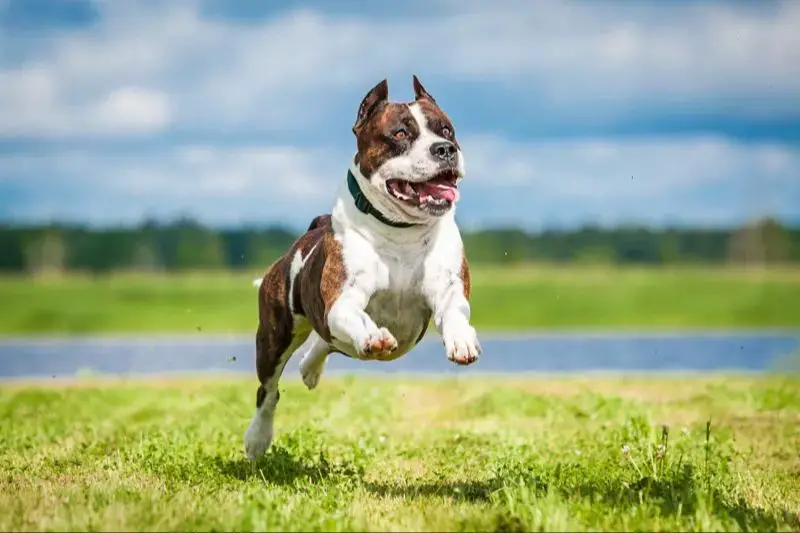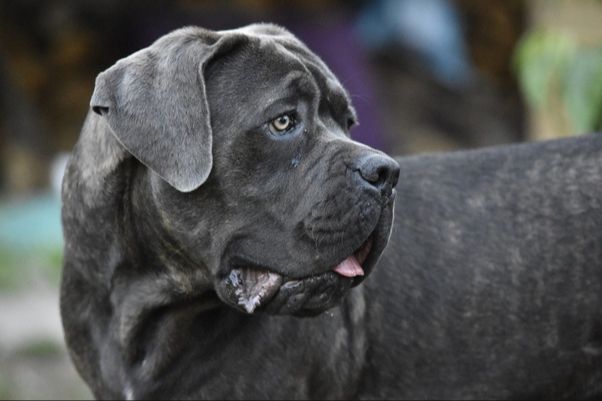Introduction
There is a common issue of pit bull breed misidentification. Many dogs get mistakenly labeled as pit bulls when they are actually other breeds. This mislabeling and confusion over breed identification is problematic for several reasons.
First, it contributes to inflated statistics about pit bull attacks and aggressiveness since dogs are getting misattributed to the pit bull category when they are not actually pit bulls. This perpetuates negative stereotypes and misconceptions about pit bull temperament and behavior when the data is not accurate.
Additionally, breed misidentification can lead to dogs being judged prematurely as dangerous or unwelcome in certain housing situations if there are breed restrictions against pit bulls. Dogs that are not actually pit bulls may face hurdles or bias simply because they were mistaken for that breed.[1]
For the wellbeing of dogs and responsible pet ownership, it is important that animal professionals, media, and the public learn how to properly identify pit bull breeds versus other dogs that often get confused as pit bulls. Accurate breed identification allows us to make fair assessments of any breed’s temperament. This article explores common breeds mistaken for pit bulls to promote more informed perceptions.
American Bulldog
The American Bulldog originates from working dogs in England in the 17th century. Bulldog breeds were brought to the United States and were used as working farm dogs in the South. Over time, they developed into the stronger and more agile American Bulldog.

American Bulldogs have a sturdy, athletic build with a large head and strong jaws. They typically have a short coat that comes in various colors like white, black, red, or brown. Compared to Pitbulls, they have a larger frame and thicker bones. Their height ranges from 20-27 inches and they can weigh 55-125 pounds.
The American Bulldog is confident, alert, and courageous. They are protective of their family and territory. With early socialization and training, they can be dependable with children. Their energetic nature makes them well-suited for activities like weight pulling, agility, and obedience training.
Sources:
https://www.sparkpaws.com/blogs/community/american-bulldog-vs-pitbull-breed-comparison
American Staffordshire Terrier
The American Staffordshire Terrier descends from the Staffordshire Bull Terrier, a working dog bred for bear and bull baiting in England in the 1800s. When immigrants brought their Staffordshire Bull Terriers to America in the late 1800s, the breed was bred to be larger and stockier for performance in dog fighting, leading to the American Staffordshire Terrier we know today. The American Kennel Club recognized the breed in 1936.

The American Staffordshire Terrier stands between 17-19 inches tall and weighs between 57-67 pounds. They have a muscular, stocky build with a broad head and pronounced cheek muscles. Their coat is short, smooth, and glossy. Coat colors include black, blue, fawn, red, white or any of these colors mixed with white. Compared to the American Pit Bull Terrier which is leaner, the AmStaff has a thicker, bulkier build.
The American Staffordshire Terrier has a friendly, trusting temperament and loves people. They are playful, energetic, and extremely loyal to their families. Known for their courage and tenacity, they require a confident owner who can provide proper training and socialization. While AmStaffs can be aggressive towards other dogs, they are gentle and affectionate with children when properly supervised.
Boxer
The Boxer originated in Germany in the late 19th century. They were originally bred from the Bullenbeisser, an ancestor of the Bulldog, and the Old English Bulldog. Boxers were developed to be medium-sized guard dogs and companion dogs.1
Boxers have a square muzzle, square jaw, and rounded tips on their naturally cropped ears. They have strong, muscular bodies and powerful jaws. Their coats are short, smooth and tight-fitting. Boxers come in fawn, brindle, and white coat colors. Adult boxers typically stand 21-25 inches tall and weigh 55-70 pounds.1
Boxers are energetic, playful and loyal dogs. They are patient with children but also protective of their family members. Boxers need daily exercise and mental stimulation. Without enough activity they can become restless or destructive. They are intelligent and respond well to training when started young. Boxers can be friendly with strangers once properly introduced. They are alert watchdogs who may bark to warn of intruders.1
Bull Terrier
The Bull Terrier originated in England in the early 19th century and was developed for the blood sport of bull-baiting. Over time, breeders began selecting dogs with a friendlier temperament to be companions and show dogs. Early Bull Terriers had a more blocky head shape, but breeders eventually developed today’s long, egg-shaped head.
Bull Terriers are strong, muscular dogs that typically stand 21-22 inches tall and weigh 45-65 pounds. They have a short, flat coat that comes in white or colored varieties like brindle, red, and fawn. Their most distinctive feature is their long, oval-shaped head with small, triangular eyes.
Despite their history, modern Bull Terriers have an affectionate and mischievous temperament. They are lively, clownish dogs that can be stubborn yet very attached to their owners. With proper training and socialization, Bull Terriers make loyal and entertaining pets. However, their strength and high prey drive require an experienced owner.
Source: https://a-z-animals.com/blog/bull-terrier-vs-pitbull/
Cane Corso

The Cane Corso is an Italian mastiff breed that originated in southern Italy. They were developed to guard property and hunt large game such as boar 1. Cane Corsos are one of the descendants of old Roman molosser dogs. Their name roughly translates to “bodyguard dog”.
Cane Corsos are large, muscular dogs that can weigh up to 110 pounds. They have a short, stiff coat that comes in black, gray, fawn, or red. Their head is large and square-shaped with a pronounced stop. Cane Corsos have a powerful build and athletic body.
The Cane Corso temperament is described as being loyal, devoted, serious, and vigilant. They can be aloof with strangers but affectionate with their owners. Cane Corsos need extensive socialization from an early age to curb aggression. When properly trained, they make excellent guard dogs.
Dogo Argentino
The Dogo Argentino was first bred in Argentina in the 1920s, originally as a big game hunting dog. The breed was created by Dr. Antonio Nores Martinez, who crossed various breeds like the Great Dane, Bulldog, Boxer, Pointer, Great Pyrenees, Dogue de Bordeaux, Irish Wolfhound and Spanish Mastiff to develop the desired traits of the Dogo Argentino.
In terms of physical characteristics, the Dogo Argentino has a short, plain and smooth coat that is completely white. These dogs have a large, thick head with a black nose and strong jaws. They have a muscular build and stand 24 to 27 inches tall, weighing anywhere from 80 to 100 pounds as adults. The Dogo Argentino resembles the American Pit Bull Terrier in muscular build, but has a bigger head and taller stature.
The Dogo Argentino was bred to have a strong prey drive, stamina, sharp sense of smell and a fearless, docile personality. They are very loyal and form close bonds with their owners. Dogos are intelligent, trainable and eager to please. However, their strength and dominant nature requires an experienced owner who can provide proper training and socialization from a young age. Without it, some aggression issues can arise.
Source: https://a-z-animals.com/blog/dogo-argentino-vs-pitbull/
English Bulldog
The English Bulldog has a similar history and origin to the Pit Bull. Both breeds descended from bull-baiting dogs in England in the 1800s. Bulldogs were originally bred to bait bulls and other large animals for entertainment. After bull-baiting was banned in England in 1835, Bulldogs were bred with smaller terriers to create smaller, more agile dogs better suited for dog fighting, ratting, and other blood sports. This breeding resulted in the ancestors of today’s Pit Bulls.
Physically, Bulldogs differ from Pit Bulls in having a shorter, stockier build with a characteristically short muzzle and pushed in face. They weigh about 50 pounds on average compared to Pit Bulls which are typically 30-60 pounds. Bulldogs also have loose skin that forms wrinkles on their face. Their coat is fine and short. Color variations include brindle, white, red, fawn, piebald, and yellow.
In terms of temperament, Bulldogs are known for being gentle despite their history as a fighting dog. They tend to be calm, affectionate, and loyal. However, some Bulldogs still retain their tenacity and need careful socialization and obedience training. Their temperament can vary significantly based on their lineage.
Sources:
[1] https://www.petsworld.in/blog/bulldog-vs-pitbull-where-they-differ.html
Olde English Bulldogge
The Olde English Bulldogge is an attempt to recreate the original working bulldog from the 1800s that has become extinct due to crossbreeding. This breed was created in the 1970s by David Leavitt who crossed English Bulldog, American Bulldog, American Pit Bull Terrier, and Bullmastiff breeds. The goal was to produce a healthy, energetic dog with the looks of the original bull-baiting dogs but with a much nicer temperament. Today’s Olde English Bulldogge maintains the athleticism and agility of the bull-baiting bulldogs.

In physical characteristics, the Olde English Bulldogge looks very similar to the Victorian Era bulldogs. They have a medium sized, muscular, solid build with a large, broad head and wide muzzle. Their coats are short and smooth and come in various colors including fawn, red, white, brindle, and piebald. Males are typically 17-20 inches tall and weigh 60-65 lbs while females are 16-19 inches tall and weigh 50-60 lbs.
The Olde English Bulldogge has an friendly, alert, and confident temperament. They are protective and loyal towards their families. Despite their history of being bred for bull baiting, today’s Olde English Bulldogge has a friendly demeanor and gets along well with children thanks to David Leavitt’s crossing of various gentle breeds. They are energetic, athletic, and require daily exercise.
Conclusion
In summary, there are several breeds that are commonly mistaken for pit bulls due to some similarities in appearance. However, each breed has its own distinct history, temperament, and characteristics. Some of the most frequent pit bull mix-ups include the American Bulldog, American Staffordshire Terrier, Boxer, Bull Terrier, Cane Corso, Dogo Argentino, English Bulldog, and Olde English Bulldogge.
While these dogs may share some physical traits with pit bulls, they are all separate and distinct breeds. It’s important to properly identify a dog’s breed, as each breed has different exercise needs, grooming requirements, and temperaments. Responsible pet owners and breeders should become familiar with breed standards and characteristics to avoid mislabeling dogs. Proper breed identification enables owners to meet each dog’s unique needs and helps dispel myths about so-called “dangerous” breeds.
